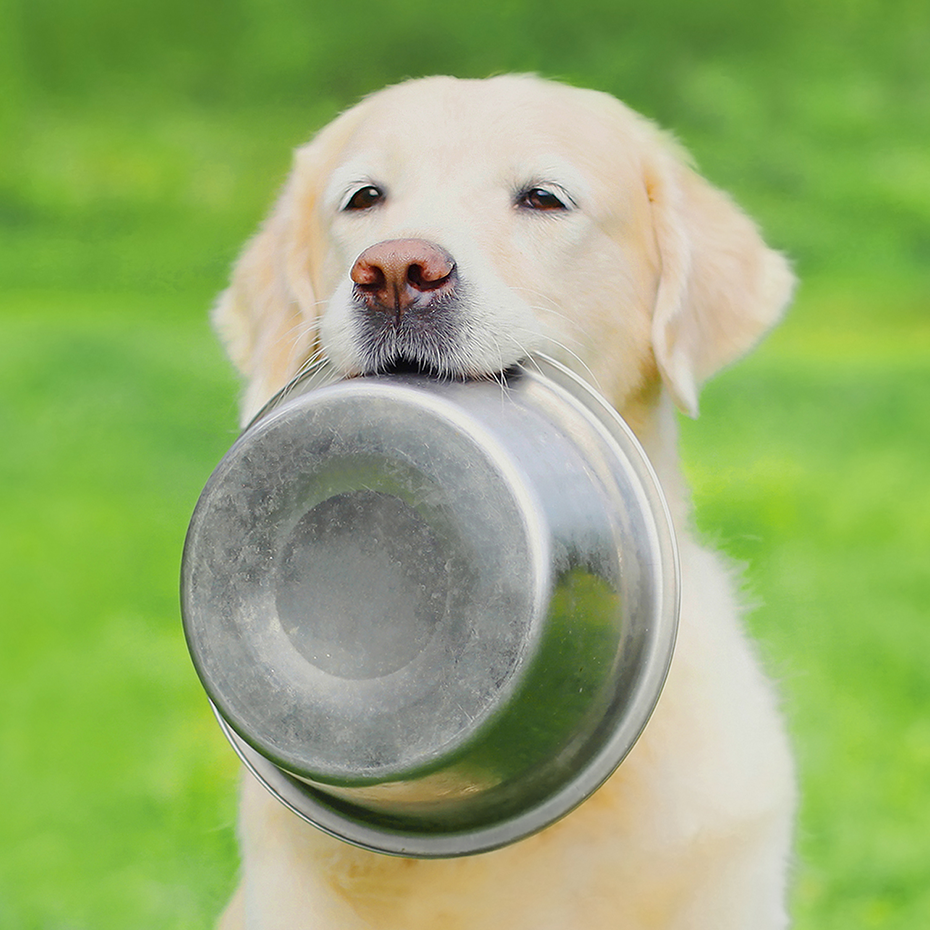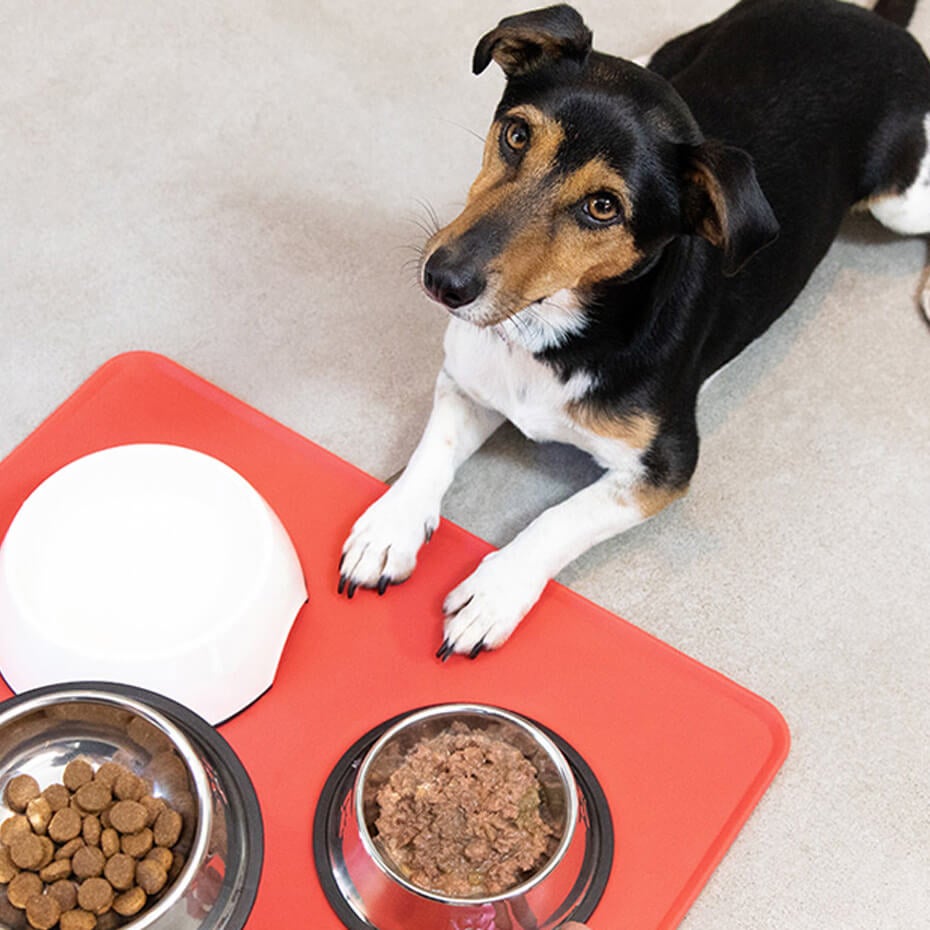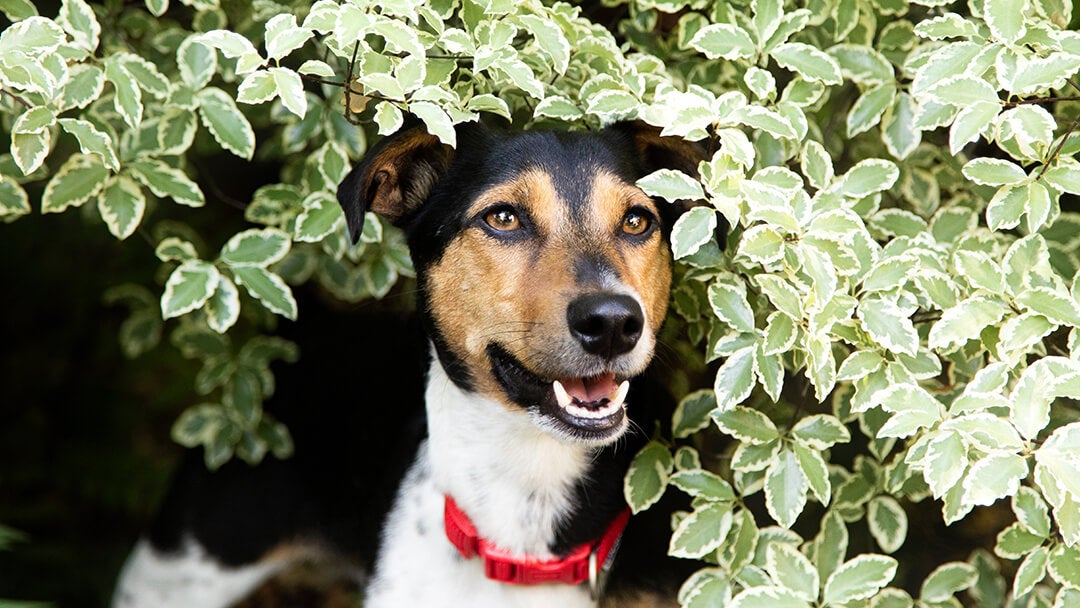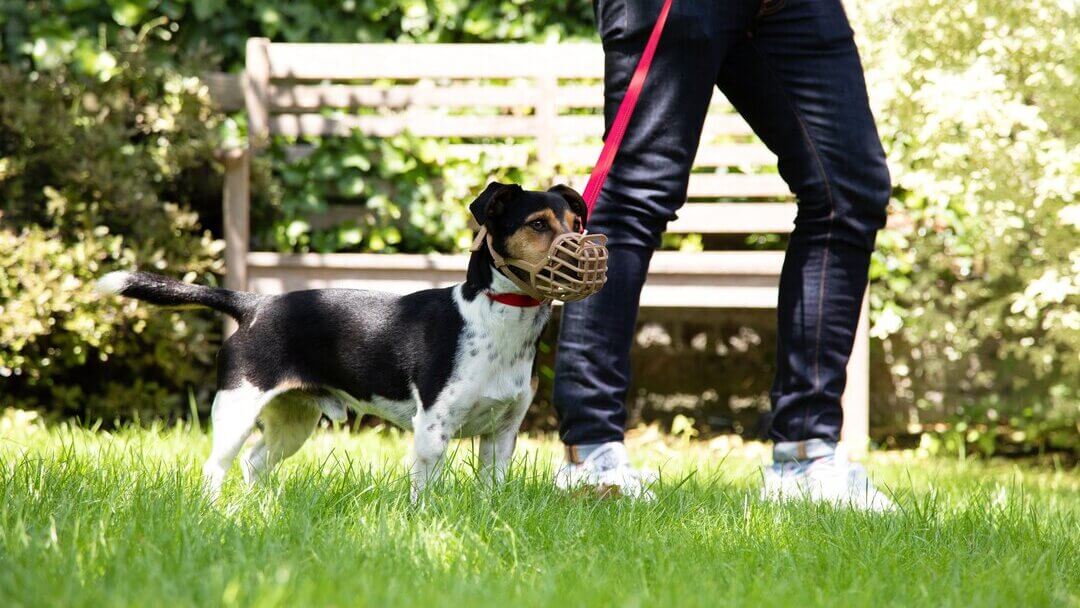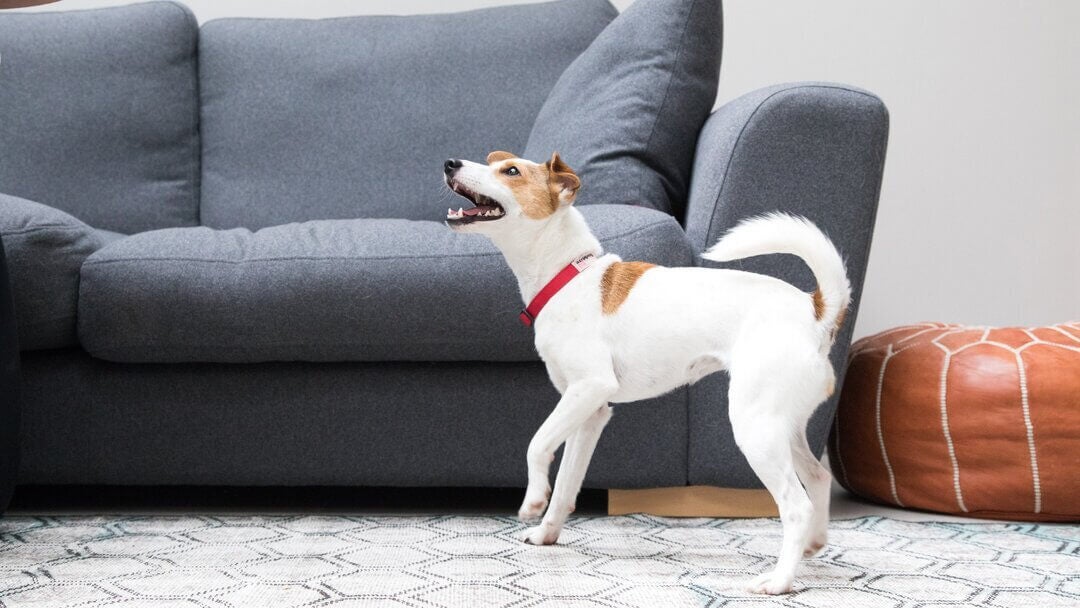
Your dog is full of curiosity and fun, but they might be frightened of things too – after all, every dog has a different personality. Some dogs are fearful by nature, and some scared dogs are more predisposed to it than others.
Dogs are naturally curious and inquisitive so they generally interact enthusiastically with the world around them but they may be times or situations where they become wary or frightened.
Every dog has a different personality depending on their breed, type, past experiences and their individual nature. Each dog is different – just like us – and while there are some real canine extroverts out there, there can also be dogs who are more worried about things around them or that they may encounter.
The more we take time to understand our dog’s unique personality, the better we can predict when they may behave fearfully, and know how to support them.
Most behaviour problems have their roots in fear – even aggression. It’s not the only cause but it is a major one and if you think of the common canine issues, often you will find that the original cause is the dog feeling worried, scared or frightened.
Causes of common behaviour problems:
- Separation Anxiety – fear of being alone.
- Noise Phobias – fear of strange or sudden noises.
- Resource guarding – fear of losing a valued item.
- Dog to dog aggression – fear of strange dogs.
- Aggression to people – fear of unknown people.
There are other common problems that arise from fear that people don’t often think of, such as hyperactivity, reactivity and not paying attention when away from home. A common complaint of many owners in a dog training class is “He’s perfect at home but he just won’t listen to me here”. That’s often because at home they are confident and relaxed but in a class situation with different surroundings, other dogs and strange people, they are much more worried.
Your dog usually feels at their safest when they’re with you in a familiar environment but like any other animals dogs may be cautious of things that they suspect could pose a threat, new places or situations, or anything out of the ordinary (or that they’ve had a bad experience with in the past). We might know that its fine and totally safe but we often forget that our dogs don’t always know that.
When our dogs are scared, they have a variety of ways they can behave – and some of them aren’t obvious. In some cases, they might respond with a ‘fight or flight’ reaction – which means they’ll either try to scare the threat away, or run away from it or find ways to avoid it.
The ‘fight or flight’ instinct is a natural one, but sometimes it can cause dogs to overreact. While you can take steps to help your dog in these situations, it’s far better and less stressful for you both if you help build your dog’s confidence and ability to cope in new situations – or else be able to recognise situations that may make your dog feel worried or scared and take steps to avoid them.
Read our tips for helping them deal with common fears and anxieties and put your canine companion on the path to happiness.
Signs of fear in dogs may include:
- Pacing.
- Panting.
- Shaking/trembling.
- Inability to settle.
- Attempting to hide.
- Lack of appetite (including being unable to take a treat).
- Being too distracted for you to get their attention.
- Salivation.
- Yawning.
- Licking lips.
- Whale eye (showing whites of eyes).
- Lifting a paw.
- Lowered body language.
- Hyperactivity.
- Goofy behaviour (getting the zoomies, scratching etc).
- Loss of toilet training.
- Reactivity.
- Growling.
- Aggression.
If you notice any of these signs of anxiety in dogs in response to certain stimuli or situations, it may be that your dog or puppy is fearful or anxious. If you think this is the case, contact an accredited experienced behaviourist for more help.
Dog fears and phobias: fireworks and other loud noises
A fear of fireworks in dogs, or of other loud noises, is quite common especially around bonfire night and new year when they’re very loud and unpredictable!
While we know fireworks are nothing to worry about, their effects can be devastating for some dogs. If not treated promptly, mild worry can escalate into a serious phobia of loud noises, and, in the worst cases, anything your dog has come to associate with fireworks, such as the approach of dusk.
If your dog is scared of fireworks, there’s no need for you to cancel your firework plans, though – just follow a few tips that will help your Fireworks Night, Diwali or New Year’s Eve celebration go smoothly.
- Acclimatise your dog to firework noisesIf your dog is scared of loud noises, ask your vet if they can recommend a pet behaviourist. Training and acclimatisation, especially when young, can teach dogs that bangs and rumbles are nothing to worry about. You can also buy CDs designed to get your dog used to loud noises.
- Keep your dog in after nightfallWalk your dog during daylight hours and keep them inside after nightfall. Even if you’re not having a fireworks party yourself, your neighbours might be, which could be a bit of a surprise to your dog.
- Panicking animals can easily run away and get lost or injured, so it’s also a good idea to make sure they’re microchipped, just in case.
- Speak to your vetIf your dog is scared of fireworks and their behaviour doesn’t change, let your vet know that they’re still showing signs of anxiety around loud noise. There are a number of different commercial solutions available, such as pheromone sprays, that your vet can advise you about if your dog is scared of loud noises.
- Be calm and reassuringYour dog takes their cues from you, their most trusted friend. Stay relaxed and calm and do not make more of a fuss of your dog than normal, even if they act distressed. If your dog is scared of fireworks, try to reassure them that everything is fine; carry on as normal and they will soon start to follow your lead.
- Muffle soundsIf your dog’s staying in with you, keep your curtains drawn and windows closed to quieten fireworks outside. Play music or turn on the TV to provide a constant, identifiable noise to mask infrequent, random bangs.
- Provide canine companyA problem shared is a problem halved. If your friends have dogs with whom your dog gets along, especially if they aren’t fazed by loud noises, ask them to visit.
Attention seeking behaviours
Attention seeking behaviour can take many forms and are exactly what the name says they are – your dog trying to get your attention.
What is really interesting about attention seeking behaviours is that often without realising it we teach them to our dogs!
We help them work out what things will really get us to take notice of them. It is a great lesson to remind us just how clever our dogs really are. Imagine for example a freshly painted door – all gleaming and shiny. The dog comes along and decides they would like to go out, and so scratches on the door to let people know. The moment they lay a paw on the door, everyone leaps up to let the dog out so as not to have a mark on the newly decorated door. Now what has that taught them? A great way to get people’s attention is to scratch on the door – and you will guarantee they will now do it endlessly because it works!
Like many behaviour problems however we shouldn’t focus on how to stop the dog from doing these behaviours but instead focus on why the dog is doing these behaviours. How are they feeling that makes them need to get your attention? For a lot of dogs this can be because they are bored, under-stimulated, under-exercised or just don’t get enough interaction with you. When you look at it that way, your dog has every right to remind you that you are not doing a good job in the owner department!
The sad fact for many dogs is that the only way they can get their owner’s attention at all is by doing something they look on as being ‘wrong’. Most people totally ignore their dog when they are sitting or lying in the corner doing exactly what they want them to do, and the only time they are the focus of their world is when they do something they don’t want them to – perhaps they bark at them, jump on them, paw at them, chew things they shouldn’t, run off with something valuable….. Anything to get their beloved owner to pay them some attention – and dogs are very quick to discover what these things are.
To prevent or stop attention seeking behaviours:
- Make sure your dog is getting enough exercise, stimulation and interaction with you – every single day. For really ‘busy’ dogs (often working breeds and terriers), you can use interactive toys in the house to keep them stimulated and give them something to do.
- Don’t ignore your dog when they are being good. Give them your attention when they are doing what you want them to. Reward good behaviour so they are very clear about the positive ways to get your attention. In general, if a dog is seeking your attention at the wrong time, it is because you are not giving them enough of it at the right time.
- Once you are sure your dog does not have every right to expect more attention from you, if they do something you do not want them to, ignore it (if it is safe to do so) so it’s not being rewarded by your attention.
- Most attention seeking behaviours consist of barking, jumping up, scratching you with a paw, pestering you with toys – in fact doing anything to try and get you to interact. If you ignore these behaviours, they will stop because they aren’t achieving the desired effect ie getting your attention.
- When the behaviour stops you have to be very quick to reward its absence. As long as it is safe, reward what you like, ignore what you don’t.
- If the behaviour is not safe to ignore (nipping guests, jumping on children, terrorising visitors, scratching people, using teeth), make use of a training lead to attach them to your chair until they settle (and then giving them a stuffed Kong or something to chew may help) or use baby gates to separate the dog from your guests or the situation with minimal interaction from you. Then contact an accredited behaviourist to help you with a behaviour modification programme to address the behaviours.
Why does my dog fear other animals and people?
Generally dogs fear things that they haven’t experienced before in the past (especially in those vitally important early socialisation and habituation weeks) – or that they may have had a bad experience with.
This is all natural canine behaviour. Nature tells all animals to be fearful of novelty – whether that is new sights, sounds, encounters or experiences) because it could be dangerous, and that self-preservation instinct is hard-wired into every animal (even us!). So don’t think that your dog is somehow ‘different’ because he is worried about certain things.
Well socialised and habituated dogs – and often certain breeds or individuals – may well grow up much more accepting of new things, as all their life experiences have been positive and they have been habituated to such a wide variety of different sights, sounds, environments and experiences that they are more accepting of novelty - whereas others will be more hesitant or worried. Every dog is an individual and it is up to owners to know and understand their own dog.
It’s also important for owners to recognise that many of the behaviours they think are silly, ‘bad’ or aggressive, are their dogs showing clear signs of fear or apprehension. Too many owners with the very best of intentions actually make things far worse by either punishing their dog or trying to force them into a scary situation to try and teach them that it’s safe. Fear doesn’t work like that! Imagine you were scared of spiders or snakes – and someone forced you into a room full of them… Even if you survived the experience unscathed and they gave you nice cakes and treats, you would still be totally terrified - and it would make your fear far worse. Not only that but you would no longer trust the person that pushed you into the room.
An example with your dog might be that they growled when approached by a small child. Now that might be because that they are unused to them (to us a toddler isn’t scary but for a dog they look different to adults, move differently, sound different and behave unpredictably) or because he has had a bad experience with children in the past. By growling, he is communicating his worry or a natural apprehension. Your dog is telling you that they are fearful – or at best that they are struggling with this situation.
Telling your dog off or trying to make them approach the toddler, or even letting the child stroke them so they learn that “toddlers are OK”, might seem logical to us but it wouldn’t work. In fact it is likely to make it worse. The next time your dog encountered a toddler, they might growl earlier and more threateningly because you have taught them that the toddler is a definite source of problems – and they can’t rely on you to help them get out of the situation - so they have to do something about it themselves. Put into this situation repeatedly, they may feel that the only option is to escalate their behaviour and even bite in order to try and make this scary thing go away.
What should you do instead?
- If your dog growls (at a child or indeed anything), the very first thing to do is to tell yourself off for not noticing your dog was worried long before they felt they needed to tell you.
- Quietly remove your dog from the situation. This keeps everyone safe and you don’t run the risk of making your dog’s fears worse.
- Contact a behaviourist for advice. Dealing safely with any kind of behaviour that could lead aggression needs the help of an accredited professional who can help you develop a desensitisation and counter-conditioning programme that can help you and your dog.
- Learn about canine body language so you can be much more aware when your dog is showing fearful or worried behaviours. Growling generally comes after the dog has given lots of other warnings first that owners often don’t recognise.
Of course, it’s not just toddlers your dog might be scared of – it could be anything from cats to lawnmowers! But in each case, there are ways to help your anxious and scared dog be less fearful.
How does desensitisation work?
Desensitisation is the process where the dog is gradually exposed to the thing they’re scared of or worried by in a very slow and gradual way that doesn’t produce the fear response. The fear is reduced when the dog can see the stimuli from a safe distance in a controlled environment and where it’s far enough away that it isn’t scary. Over time and with repeated positive sessions, slowly and steadily that distance can be decreased, and the intensity increased.
With this repeated exposure, under the guidance of an accredited canine behaviourist, the dog can begin to learn to become comfortable around what they were once scared of!
This is usually coupled with counter conditioning – teaching the dog that not only is the previously worrying thing not scary but actually really good things can happen when it is around. Using this behaviour modification method, you can gradually change the dog’s emotional response so they don’t just ignore the thing, they actually start to feel good about it because it predicts treats or a game.
Sometimes this will involve teaching the dog to do something else in the presence of the stimuli – such as look at the owner, or touch their hand with their nose, or get hold of a toy – and that new behaviour can be rewarded. Other times just the stimuli itself will predict the reward.
With work, this means that the dog learns that the thing that caused them worry or fear isn’t anything to worry about, and even better, if they do something else instead, they get really good rewards when that particular thing is there.
This kind of behaviour modification programme should however be done under the guidance of a behaviourist to ensure you are not making the dog’s fear worse by flooding them with the stimuli and instead of desensitising them you end up sensitising them (think of the room full of spiders or snakes), and making the fear - and so the behaviour - worse.
It is important to address your dog’s fear of people or other dogs – as this can have potentially dangerous consequences. If your dog’s fear response continues or worsens for any reason, it can escalate until it an aggressive response becomes your dog’s preferred way of dealing with difficult situations as they have learned that it works to either get them out of the situation or to make the scary thing go away.
If aggression becomes the preferred strategy for any dog to relieve their fear, not only is this dangerous and could cause people or other dogs injury, there may be serious legal implications as well – and could even cost you your dog’s life.
Even if your dog’s fear doesn’t get that bad, your dog may well be very unhappy and stressed a lot of the time, which is unpleasant for you both.
It’s best to seek professional advice from an accredited behaviourist at the first sign of dog anxiety or fear of ‘normal’ social situations, either at home or outdoors. This way you’ll soon have your dog feeling confident, happy, and well-behaved – and you’ll be able to have loads more fun together!
Preventing noise phobias in puppies
Good, early habituation that includes hearing a wide range of sounds will help prepare a puppy for any unexpected or loud noises they will encounter later in life.
If raised in a breeder’s busy home, with people coming and going, and all the sounds that accompany ordinary family life (pans being dropped, washing machines, loud music, excited play and so on), then a puppy is much more likely to be noise-tolerant as an adult in any subsequent home. A good breeder will ensure that their puppies get to hear other sounds too – and many will play background sound-effects such as thunderstorms, fireworks, traffic etc while the puppies are playing or eating so they get used to unexpected and strange noises happening at times when they are having a good time, and so grow up thinking that they are nothing to worry about.
If a puppy’s first exposure to these noises comes after their socialisation and habituation window has closed and so causes fear, they could well learn to be scared of such sounds for life.
The information contained in this article is not a substitute for individual veterinary or behavioural advice and is for information purposes only. You should always consult a veterinary surgeon if you have any concerns about your pet’s health. He or she will be able to take a complete medical history and physically examine your pet, to then recommend appropriate individual advice or treatment options. For detailed behavioural advice tailored specifically for your scared dog, we recommend that you contact an accredited and experienced behaviourist.
